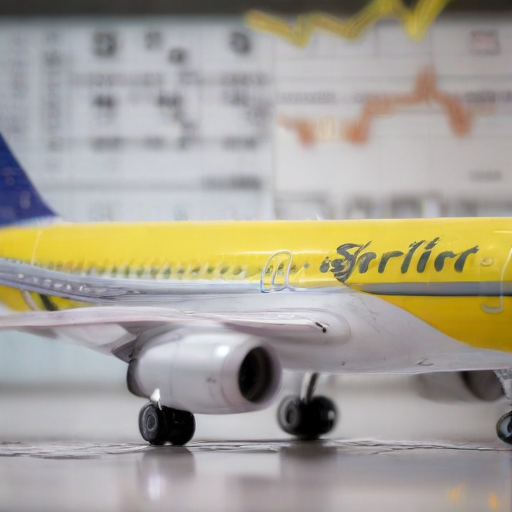Spirit Airlines announced on Monday that it has filed for bankruptcy protection as part of a prearranged Chapter 11 process in an effort to restructure and recover from the significant challenges faced during and after the pandemic, alongside a failed merger attempt with JetBlue. As the largest budget airline in the U.S., Spirit has incurred losses exceeding $2.5 billion since early 2020 and is facing over $1 billion in debt payments due in the next year.
Despite the bankruptcy filing, Spirit has assured customers that operations will continue as usual, with all tickets, credits, and loyalty points remaining valid. The airline’s leadership is focused on negotiating terms with bondholders to stabilize the company’s financial situation while launching new products and enhancing loyalty programs.
In the first half of the year, more passengers flew with Spirit, but at a lower fare, resulting in a nearly 20% decrease in revenue per mile. Rising costs and intensified competition have further complicated Spirit’s recovery efforts. While premium airline offerings have risen, Spirit’s traditional low-cost model has struggled, pushing the airline to bundle services for a more comprehensive travel experience, a departure from its low-fare focus.
To address revenue challenges, Spirit plans to reduce its flight schedule by nearly 20% for the last quarter of the year, in hopes of boosting fare prices. However, industry analysts suggest that this reduction may primarily benefit competitors like Frontier and JetBlue.
Engine issues have also complicated operational reliability, causing Spirit to ground a significant portion of its Airbus fleet, demonstrating the multifaceted challenges the airline faces. Notably, the spirit of resilience is evident as the company retains the backing of its employees and unions, with no anticipated furloughs, allowing it to maintain its workforce as it navigates this transitional period.
This situation mirrors historical patterns seen in the airline industry, particularly during economic downturns, signifying the cyclic nature of airline operations. Optimistically, Spirit has a relatively young fleet and has shown adaptability, positioning it uniquely for a recovery as it restructures.
In summary, while Spirit Airlines grapples with ambitious plans for recovery amid bankruptcy, its focus on refinancing, operational adjustments, and a commitment to customer service may provide a pathway to regain strength in a competitive market. The ongoing support from its union and commitment to existing customers is a hopeful sign amid the challenges faced.
